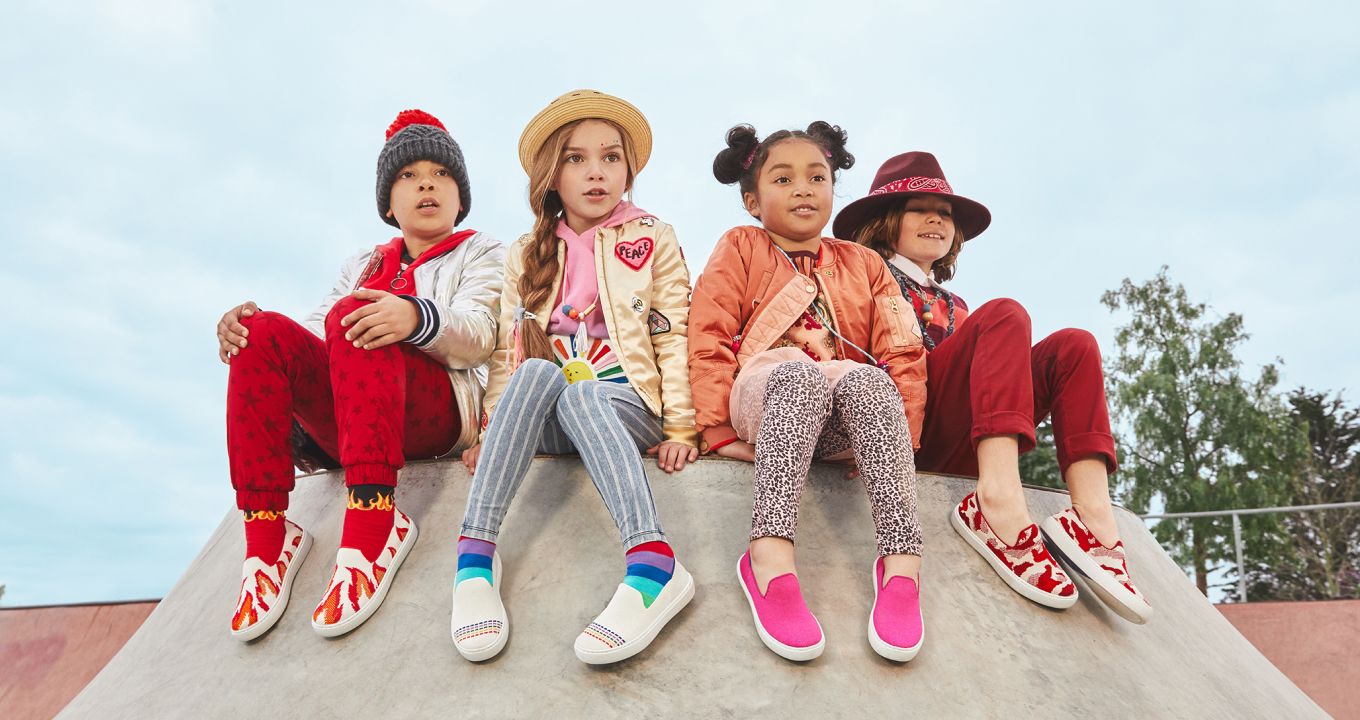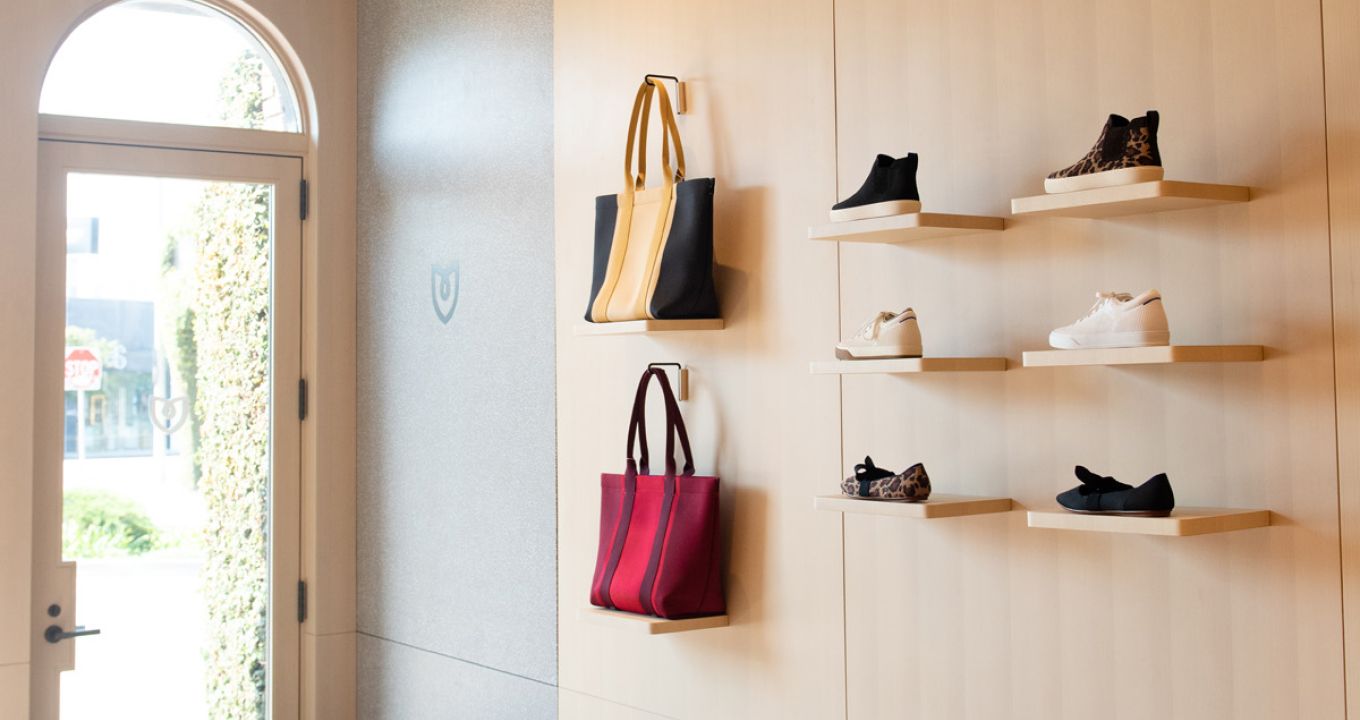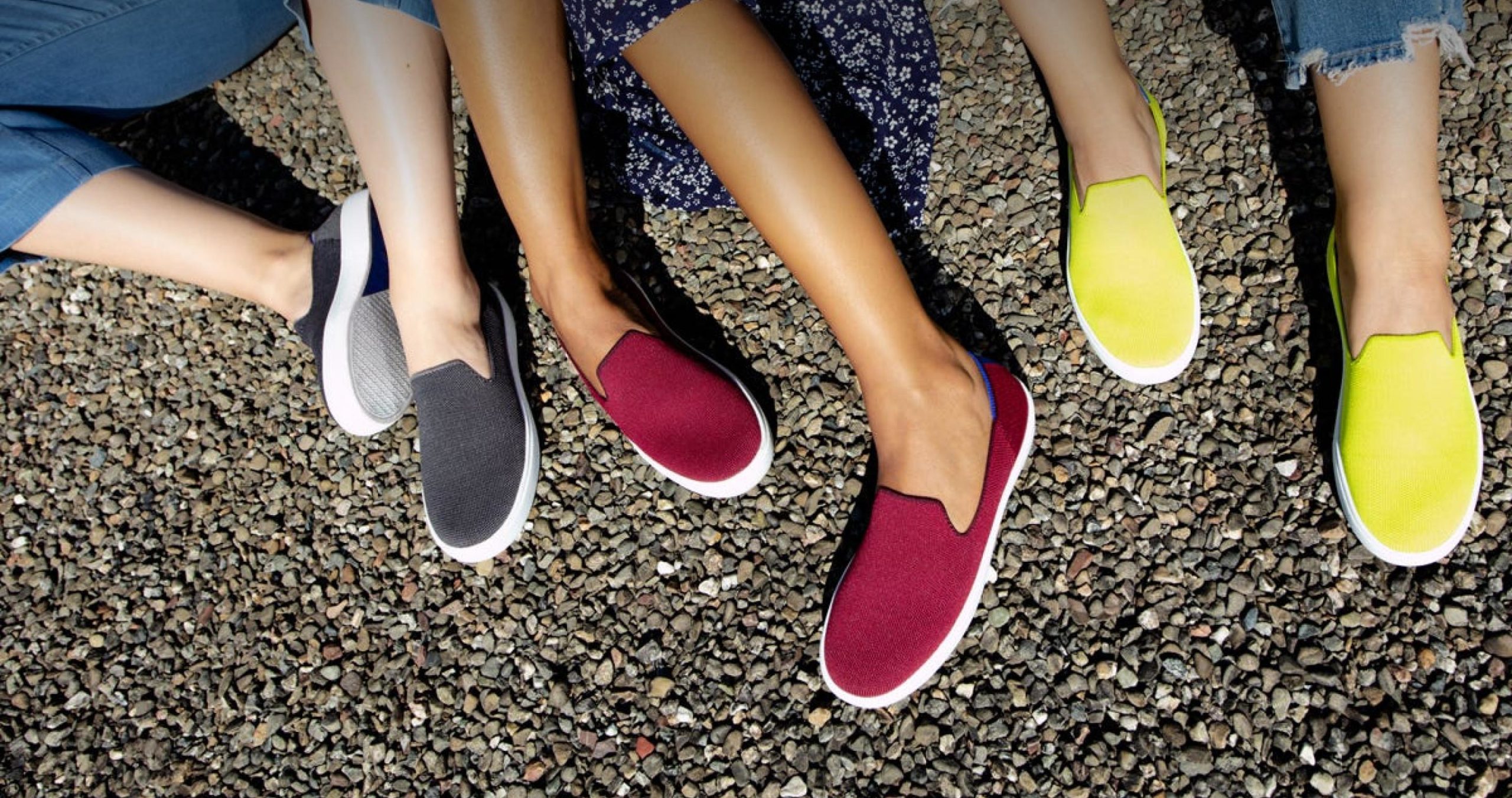“Centric allows you to eliminate the documents and spreadsheets that everybody’s updating or forgetting to update, because they live in one central source.”
Heather Howard, COO at Rothy’s describes the improvements after implementing Centric PLM™. “From a human perspective, Centric PLM makes life much easier for our people in design, product development and manufacturing. We’re able to work directly with our factory… and eliminate the countless other manual steps that existed before Centric.”
Rothy’s was founded with eco-consciousness baked right into their DNA. Having efficient workflows make their mission of sustainable footwear manufacturing easier to manage.
An Idea Comes to Fruition
The company is headquartered in San Francisco, founded in 2012 and launched in 2016. Roth Martin and Stephen Hawthornthwaite came up with the idea one night at a dinner. The two wanted to create a company and decided on shoes. Says Howard, “They learned how much waste exists in the footwear industry and asked, ‘how can we do this differently and in a sustainable way?’” Initially working with OEMs, the pair could not get the final product they were after and finally decided to just do it themselves, building Rothy’s wholly-owned factory in China. Today, the company makes everything it sells, offering stylish, comfortable and sustainable shoes and handbags through their online site and stores in select cities.
Total Control
Owning the factory gives the company advantages that they wouldn’t otherwise have. Howard says, “We can really own our production. We can do things just-in-time, we can plan out in the future and through this chaotic supply chain. The last two years, we had 98% on-time delivery and the 2% that was late was due to port delays. We’re in constant contact with our factory and don’t have to compete with other companies for production. And we kept our factory workers safe with our COVID protocols; we didn’t have to shut down even for one day.” The factory also serves as proving grounds for R&D trials of ideas for new footwear product development and improvement.
Howard states, “We want to do things right…We launched with just two silhouettes, The Flat and The Point. And we didn’t go to market until we were ready. We’re always thinking about how we do this in the most sustainable way versus retrofitting something later.”

Just Like Being There
The pandemic has put a damper on visiting assets overseas. Howard says, “Normally we would be traveling to our factory, but like most, we have not gone over in the last two and a half years. This makes it more important to be organized and working from the same source of truth as your production.” She also mentions that people don’t think twice to work from home with Centric PLM in place. It similarly lends itself to going completely remote. “We have had a few people move out of California that are still with us and it’s working really well.”
Green Through and Through
Taking a closer look at Rothy’s revolutionary processes gives some insight how committed they are to keeping waste down. Beginning with the thread that is formed from plastic water bottles—125 million and counting—to 400,000+ lbs of recycled ocean plastic.
The thread is made directly into shoes using an innovative 3D knitting technique that took 3.5 years to perfect, avoiding the waste generated from the more traditional cut-and-sew methods. Other components are made from bio-based materials like wool, rubber, sand, corn, hemp fiber and castor beans that can be easily tracked through PLM.
Rothy’s talks about circularity as a “continuous loop that renews itself, from material and manufacturing to product and recycling. The vision is to use twice-recycled materials in new products—to close the loop, like nature does.” Pioneering PLM solutions integrate this closed loop model into managing each aspect of product development from manufacturing, supply chain, through to returning, repurposing and recycling the product.
Gaining Efficiency
Howard explains that they decided to go with PLM to gain efficiencies in their process.
When we partnered with Centric Software about three years ago, we were young and growing so fast that we weren’t using all of Centric PLM’s capabilities. In this last year, we made a conscious effort to redo our processes and take advantage of its full capacity.
It takes hard work to do this and can be painful, but once you get to the other side, the fact that you can eliminate the 14 different places that everybody’s having to update, and have one central source of truth that can also then feed your other systems, is amazing. We’re at about 97% and it’s been transformative for our teams.”
Eco-conscious Customers
Rothy’s customers come from two places. Some are drawn in by the beauty of the styles. Howard says, “When someone tries our shoe on for the very first time, the universal reaction is ‘oh, these are so comfortable!’ They then quickly learn what our mission is and how the shoe was made and get excited around that. Then you also have the converse, where the customer is of the mindset: this is how I want to shop—I want to support brands that are being sustainable and thoughtful in the work that they do.
It’s great either way—it creates this incredible flywheel of word of mouth. Our customers learn not only do we make this beautiful, comfortable shoe, but it’s durable, washable and sustainable.”
Packaging and Happy Returns
One of the first and more obvious places that companies look to improve environmental impact is packaging. Since Rothy’s was created expressly with sustainability in mind, that wasn’t the case for them but still an area of focus. With direct-to-consumer sales soaring since the pandemic started, shipping has come into the spotlight. Howard says, “We use 95% recycled packaging materials and we ship in our shoe boxes straight from the shelf—we do not ship a box in a box.” By having the material data tied directly to each packaging code in the BOM, determining the percentage of recycled material is simple.
She continues, “Further, as we all know, there’s a whole reverse logistics side to returns that has increased immensely over the last two years because everybody was ordering online. We’ve partnered with Happy Returns, a company that has return bars all over the United States. It eliminates customers having to do returns the old-fashioned way where you print out a label, tape it to your box and take it in. Now you don’t even need to have the box. For instance, you can return your shoes to a Paper Source [which hosts return bars].”
Customers are refunded in 60 seconds on the spot. Howard notes, “The return bars employ reusable shipping containers. That has saved something like 54 tons of cardboard for every million returns. It’s incredible to be able to reduce that footprint on the cardboard front.” Tracking those returns as they come in, is straightforward via a central, digital hub.
Not Ready to Let Go
Rothy’s is continuously improving their eco efforts. Howard says. “As we’ve grown in 2021, we began exploring the next frontier in sustainability and design and the end-of-life solution. Though our shoes and bags are designed for durability, eventually a sustainable solution for unwearable products needs to exist. The first initiative toward that was our pilot recycling program. We had people bring in their shoes to our stores. We actually struggled a little because people weren’t ready to give up their Rothy’s. Their attitude was: ‘these are still in great condition. I can wash them and I’m not ready. I’m not letting go.’ That was a great learning.”
“The work that we’re doing on how to deconstruct our shoes leads to the next initiative: twice recycled materials,” says Howard. “Because everything in our shoe is natural or recycled, it’s easy to repurpose those components. We’re deconstructing and reclaiming these twice recycled materials to create something new.” Companies can manage end-of-life within PLM, adding circular labelling or tags within the Bill of Labor (BOL) such as ‘return’, ‘deconstruction’, ‘chopping / shredding / grinding’, for example.

Zero Waste
Howard mentions the next initiative: zero waste factory. “It’s super exciting, and we’re one of the first in the industry to do this. Our factory will achieve LEED status and true zero waste certifications this year, validating that we’re operating with green building practices. And last but not least, is full circular production. Rothy’s 2023 goals are our most ambitious yet! Not only will our products be crafted with majority twice recycled and biomass-based materials, but every Rothy’s put into the world will have an end of wear solution.”
Tracking the certifications, regulations and requirements is key to maintaining status, which Centric PLM does alongside all the product development information. For companies that do not own their own factories, tracking certifications of OEMs and suppliers becomes even more critical to their sustainability pursuits since certifications expire and need to be managed.
Parting Words
For businesses that need to draw up a sustainability roadmap. Howard offers some advice to those looking to embrace sustainability more fully. “Start by breaking things down because if you go after everything, you’re going to be overwhelmed and end up doing nothing. Take it case by case: supply chain team, let’s take a look at our packaging. What are we doing? What could we do differently? Hey, materials team, where are there places where you can reduce waste… and go through each team that brings something to the table to move that needle forward, I think is the best approach.” And of course, implement a modern PLM for design and manufacturing to tackle the complexities that go along with being green.
New to Centric PLM? Learn more
What is Centric Pricing & Inventory? Learn more
What is Centric Market Intelligence? Learn more
Centric Visual Boards Learn more















